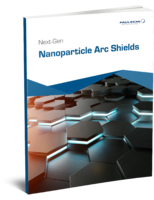Aluminum Sheet Shear Testing Standard has been revised by ASTM.
Press Release Summary:
ASTM B831, Test Method for Shear Testing of Thin Aluminum Alloy Products, describes shear testing for aluminum sheets used in aircraft, automobile, light rail car, can, foil, and building materials applications. Revised to include testing procedures for wider range of uses, standard extends to applications where aluminum alloys are used for making structural components lighter. Appendix describes novel shear test sample geometry and incorporation of digital image correlation.
Original Press Release:
Procedures for a Wider Range of Uses Now Included in ASTM Aluminum Shear Testing Standard
Aluminum sheet products are used around the world in a wide array of applications, from aircraft, automobiles and light rail cars to cans, foil and building materials. The standard that describes shear testing for such aluminum sheets, ASTM B831, Test Method for Shear Testing of Thin Aluminum Alloy Products, has recently been revised to include testing procedures for a wider range of uses.
“ASTM B831 originally covered thin wrought and cast aluminum alloy products mainly used for aerospace applications in which shear strength is a major concern,” says ASTM member Jidong Kang, research scientist, Natural Resources Canada. “With this revision, the coverage will be greatly extended to many other applications, in particular the automotive industry, where aluminum alloys are increasingly being used for making structural components lighter in weight.”
The major change to ASTM B831 is a new appendix that was created to describe a novel shear test sample geometry and incorporation of digital image correlation for shear strain measurement. As Kang describes it, the appendix “provides an advanced method of determining shear stress – shear strain behavior of aluminum alloys using digital image correlation and a modified specimen design.”
According to Kang, ASTM B831 will be used in the following ways:
• Materials testing facilities and laboratories will make material property determinations;
• Academic institutions will train with it;
• Design engineers, computational modelers and metallurgists will use material performance data in the prediction of component and system structural performance; and
• Industry associations such as ASM International and the Aluminum Association will use it to report material performance data.
ASTM B831 is under the jurisdiction of Subcommittee B07.05 on Testing, part of ASTM International Committee B07 on Light Metals and Alloys. All interested parties are invited to join in the standards developing activities of B07.05.
To purchase ASTM standards, visit www.astm.org and search by the standard designation, or contact ASTM Customer Relations (phone: 877-909-ASTM; sales@astm.org). ASTM International welcomes participation in the development of its standards. For more information on becoming an ASTM member, visit www.astm.org/JOIN.
For more news in this sector, visit www.astm.org/snmetals or follow us on Twitter @ASTMMetals.
ASTM Committee B07 Next Meeting: Nov. 1012, 2014, November Committee Week, New Orleans, La.
Technical Contact: Jidong Kang, Natural Resources Canada, Hamilton, Ontario, Canada, Phone: 9056450820; jkang@nrcan.gc.ca
ASTM Staff Contact: Kristy Straiton, Phone: 610-832-9640; kstraiton@astm.org
ASTM PR Contact: Barbara Schindler, Phone: 610-832-9603; bschindl@astm.org




